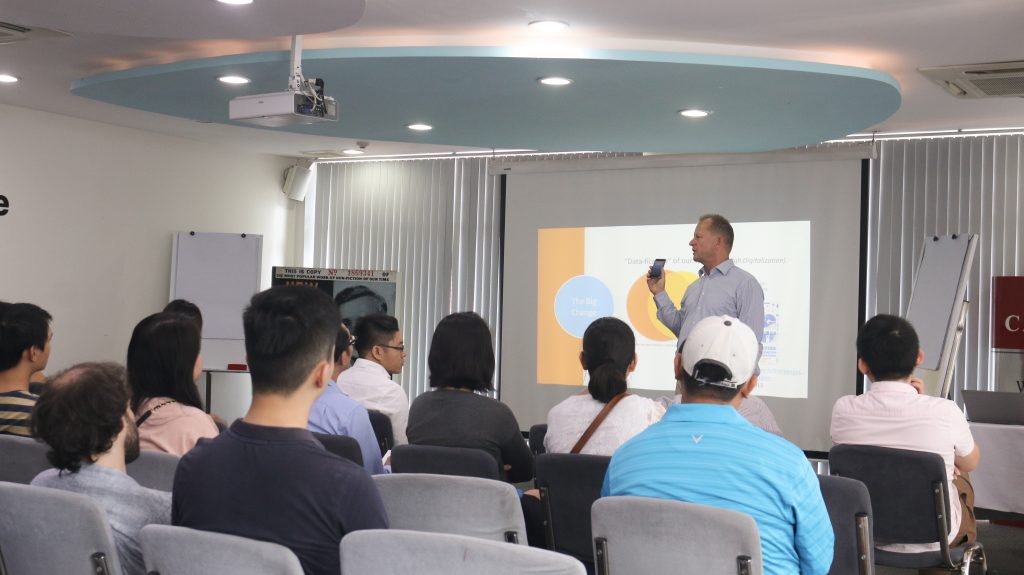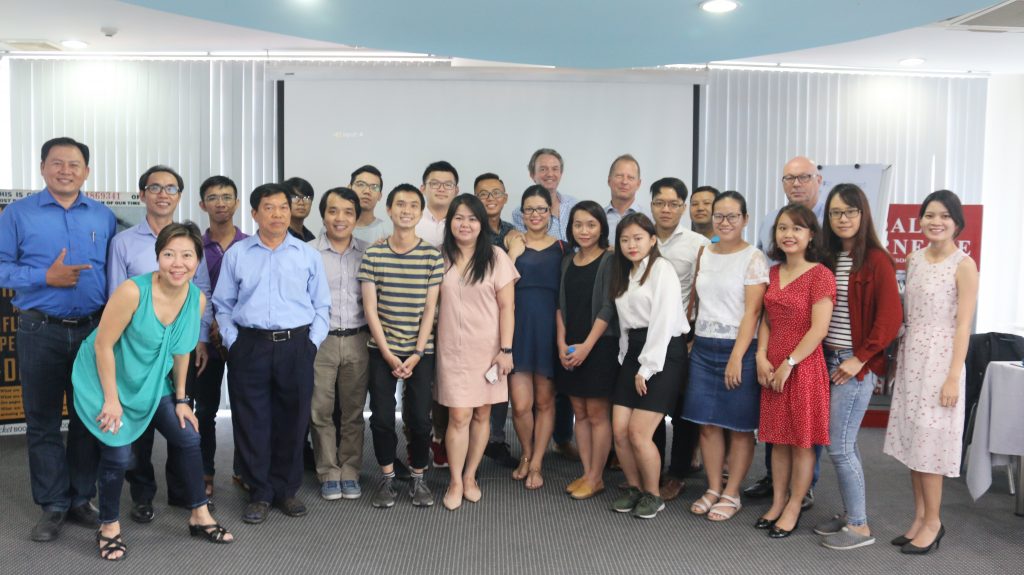Business Talk: Big Data, AI, Analytics: From the hype to business value
“Don’t be afraid of Big data”, if Thierry had one message to share with us during his last business talk that would be this one. Data, Big data, deep learning, analytics, cognitive artificial intelligence,… those words sound barbaric to you? Well, luckily our professor, Thierry, who also runs his own company specialized in AI, is here to decode them. And you will see that with clear explanations, there is nothing to fear.
1) Big data, datafication, analytics, what does it means?
Before giving the methods or secrets about data analysis, better to define the subject: Big data.
What is big data? What are the differences between data and big data?
Big data is simply a big amount of data, no more. The feeling that it’s something much more complicated is probably linked to the fact that we need to organize those data. The challenge here is then to capture a maximum of data, manage them and find the process to use them.
Another particularity of Big data is that not only they are big but also they are collected in real-time. Google, Twitter as well as the public surveillance cameras are examples of massive data streams. The power of those institutions is huge but as mentioned before, data itself is useless without any organization and interpretation. Big data can’t be used alone.

What is Data-fication?
“Everything we do leaves a trace in the world.” reminds us of Thierry. Indeed, each of our actions is recorded and can be used by its owner. Companies understood it; those with a core business operation relying on data and its infrastructure are progressively transforming into data-driven enterprises. We call this change “Data-fication”.
What is analytics? How far can the analysis go?
“Analytics is a mindset that focuses on making sense out of data to have actionable business insights.” stated the presentation of Thierry. In other words, data alone is irrelevant. We need to transform our data into information and make those information knowledge adapted to our business.
To show us how far can go the analysis, Thierry exposed us to a typical data science problem: Is it possible to use telematic data to identify a driver’s signature? Imagine a car, in this car a driver, but how to recognize without being physically present who is driving? This question can be solved thanks to a strong analysis which requires setting features and several variables.
Depending on the difficulty of the problematics, the analysis process is more or less important. Some challenges like “how to recognize a face without a label” can be solved with machine learning programs. Machine learning is a second level of artificial intelligence, it consists in memorizing specific features of one element and then being able to identify it in a different situation.
Today, deep learning has breakthroughs in the AI world. This expanding technology offers high computing performance. In the field of picture identification, here is how it works: a huge amount of random pictures are gathered. Among them; are several pictures of cats. With powerful algorithms collecting and analyzing different information, the process is able to define by himself the concept of a cat. And no human action interfered in this operation, etc.
2) What are the challenges?
In 2015, deep learning; a big amount of data collected over several years; enables to create of the “Rule game changer”. The computer keeps collecting data and uses pattern matching action. To play chess, the computer will analyze your actions and use them to strengthen its game. But creating a big database is not that easy.
Although the best level of technology today, deep learning is the hardest to reach. The necessary big data set demands energy, time, and methodology. Besides, humanity is infinitely complex and despite the rise of artificial intelligence(1), scientists have to train computers as proper humans.
“Teaching pragmatism to computer is one of the most arduous tasks for a scientist” stated Thierry.

Indeed, human societies got rules, and rules are not always clear and obvious. All the more our cultures differ from where you live in the world. A clear example will help you to understand the complexity of the task: When we say, “I don’t have 100$”, it implies that I have less than 100$, but for a computer, it means that you can have less or more than 100$. Scientists have done a lot of work before programming an artificial intelligence capable to distinguish these shades.
(1)Artificial intelligence is the technology that we can find in robots for example. More clever than a computer, a robot working with AI is part of the world. He can perceive, understand and think.
3) How AI can help your business?
AI can help you to make better decisions for sure. But before calling on a specialist to analyze your data, you need to ask yourself good questions. Is my database consistent enough? How many years of data do I have? Indeed, if you have less than 3 years of data, a predictive model will be simply useless. 3 or 4 years are the minimum to elaborate a relevant strategy.
Now, let’s suppose you have enough data, what can you do with them? Here are various business axes that can be improved thanks to Artificial intelligence:
- Products: Enhancing the features, functions, and performance; creation of new products.
- Operation: Optimization of internal business operations and external processes like marketing and sales.
- Workforce: free up workers to be more creative by automating tasks.
- Business shares: capture and apply scarce pieces of knowledge to pursue new markets.
In a nutshell, AI brings automation and new inputs. Such competitive advantages can help you to enter a new business or take the lead on your competitors.
The offer and demand for AI-driven products will increase rapidly in 5 years’ time. Indeed, because of AI, offers and internal processes will rise up from 20% to 60% for technology and consumers. Financial services and health care will be also strongly modified by 2023 (15% to 55%).
But today, less than half of companies are using AI in their process. Some of them are currently on pilot projects (23%); others use AI in some of their processes (18%), and for a minority, AI is extensively incorporated (5%). So, it’s time to choose your side! There may be an opportunity for your business!
Finally, let’s take a look at some moments of Business Talk:





